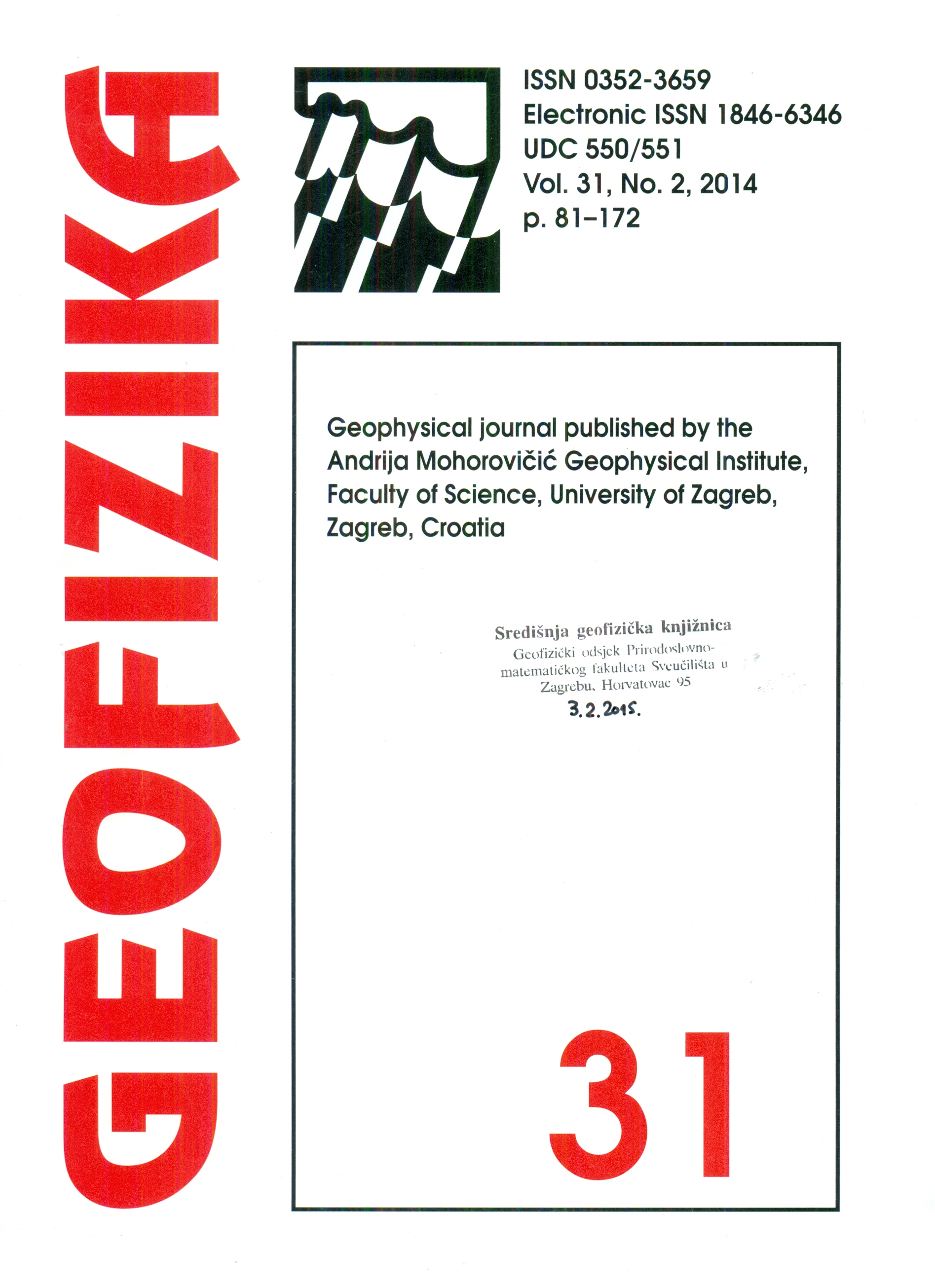Recent precipitation trends and future scenarios over the Mediterranean Sea
DOI:
https://doi.org/10.15233/gfz.2014.31.7Keywords:
Mediterranean Sea, Black Sea, precipitation, climate modelsAbstract
This paper analyses current precipitation rates (PRs) and trends over the Mediterranean Sea region and their response to global climate change scenarios. The analysis uses 0.25º gridded PRs dataset over a 13-year period (1998–2010) based on remote sensing data from the Tropical Rainfall Measuring Mission. Future scenarios use the results of six global climate models (GCMs) under four representative concentration pathway scenarios (i.e., RCP26, RCP45, RCP60, and RCP85).
Results indicate that the Mediterranean Sea region displays a seasonally significant (insignificant) wetter trend during cold (hot) seasons, and exhibits annual spatial variation ranging from under 15 to over 100 mm month-1 over the period 1998–2010. Sea level pressure has two different effects on precipitation over the northern (inversely related to precipitation) versus southern (directly related to precipitation) Mediterranean Sea. However, sea surface temperature is anti-correlated with precipitation. The GCMs that describe the current Mediterranean Sea precipitation most realistically are GFDL-CM3-1, MIROC-ESM-CHEM, and HadGEM2-AO, which are used to calculate the ensemble mean for each representative concentration pathway scenario. The ensemble means realizations indicate that the study area will experience substantial drought in the 21st century. Uncertainty in the projected precipitation over the Mediterranean Sea was partitioned into four sources, of which the used scenario dominates.
Downloads
Published
Issue
Section
License
Copyright (c) 2021 Geofizika journal

This work is licensed under a Creative Commons Attribution-NonCommercial 4.0 International License.

